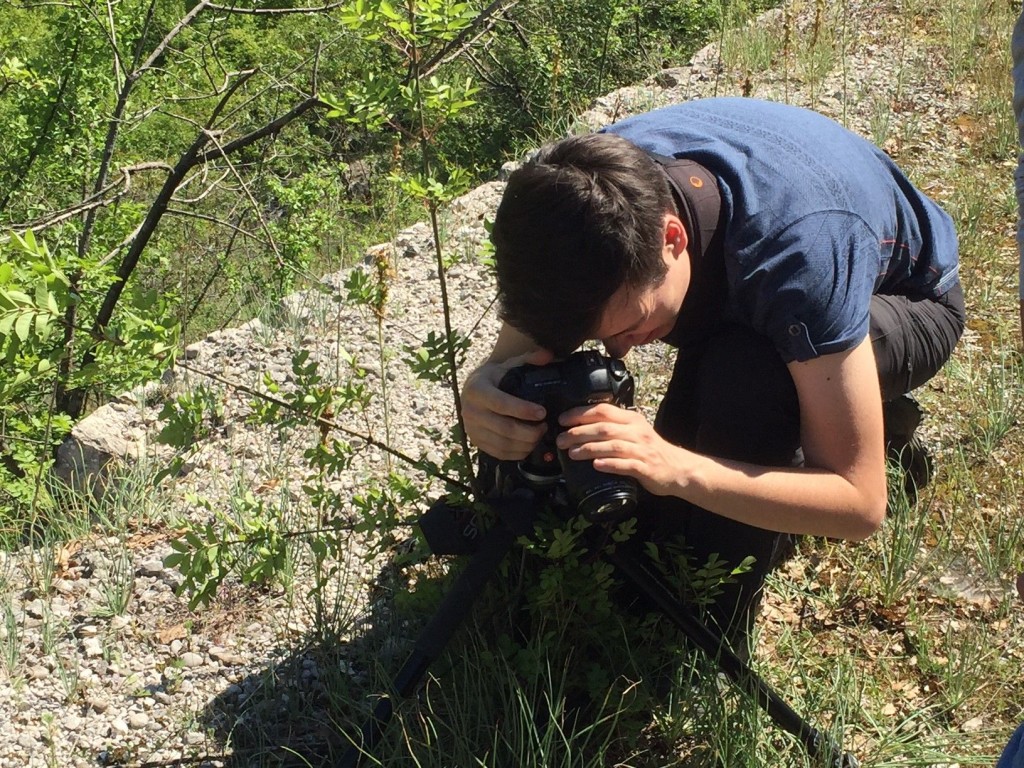 As a nature lover, I have always been fond of wild orchids. From late April to June, you can find these flowers everywhere in Montenegro, provided that the soil is calcareous – on meadows and fields, along country roads and hiking trails, among rocks and under bushes. Many of them are amongst the most beautiful of all wild flowers.
As a nature lover, I have always been fond of wild orchids. From late April to June, you can find these flowers everywhere in Montenegro, provided that the soil is calcareous – on meadows and fields, along country roads and hiking trails, among rocks and under bushes. Many of them are amongst the most beautiful of all wild flowers.
The most common orchids in Montenegro are the early purple orchid (Orchis mascula) and the green-winged orchid (Anacamptis mori – photo 1). In April and May, these purple – sometimes also pink or white – flowers cover many fields in the central part of the country. Other orchids, from the Ophrys family, grow more individually and can be recognized by their typical form. They look like a bee, a mosquito, a wasp or a spider; altogether, they are fascinating mimics of insects.
Attracted by my earlier posting about orchids (see: https://montenegro-for.me/2014/04/looking-for-wild-orchids-in-montenegro/), Dino Zelenika, orchid expert and owner of the newly-established travel agency Real Earth Travel in Bristol, Great Britain, visited Montenegro in late April (photo 2). It was a pleasure for us to accompany him in his search for orchids, as he intends to organize orchid tours to Bosnia & Herzegovina and Montenegro in the future, starting from spring 2017.
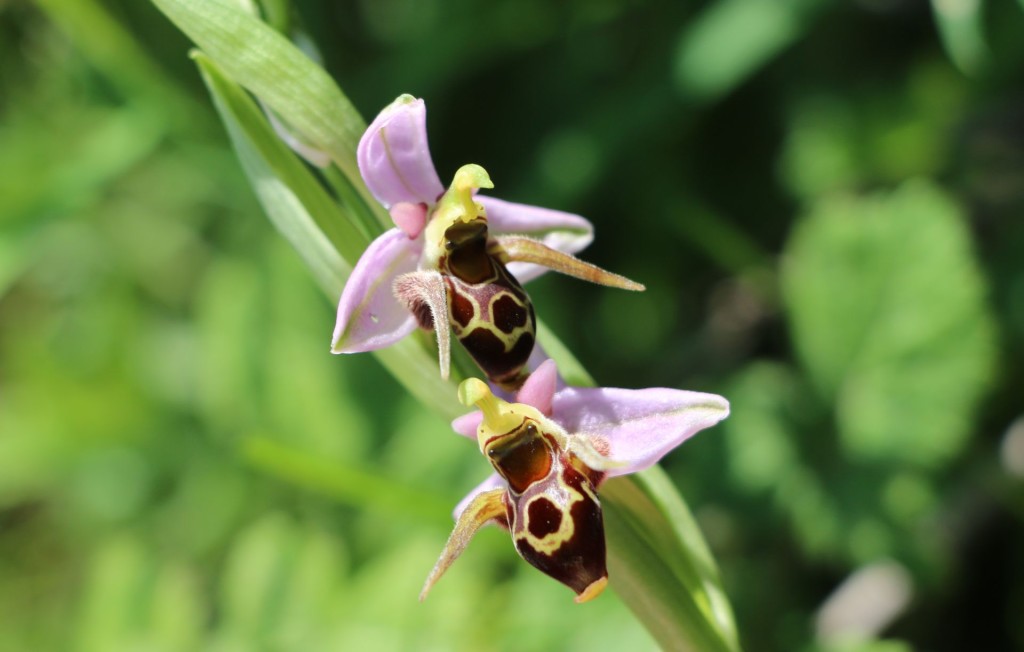 Although it was rather early in the season, we spotted many different orchids. One of them was the yellow sparse-flowered orchid (Orchis pauciflora), a rare flower that is recorded in eastern Mediterranean countries only.
Although it was rather early in the season, we spotted many different orchids. One of them was the yellow sparse-flowered orchid (Orchis pauciflora), a rare flower that is recorded in eastern Mediterranean countries only.
By the way, did you know that Orchis means “testicle”? Instead of roots, these flowers have a pair of tubers that resemble testicles. These tubers contain a nutritious, starchy polysaccharide called glucomannan. The flour made from the tubers of Orchis mascula and other species is called salep. It is consumed in beverages and desserts, especially in countries that were formerly part of the Ottoman Empire, e.g. Macedonia, Greece and Turkey.
Personally, I find the Ophrys family especially spectacular. Ophrys means “eyebrow”, as this flower provided a brown dye which the Romans used to day their eyebrows and hair. It was already mentioned in the manuscript “Natural History” by Pliny the Elder (23-79 AD).
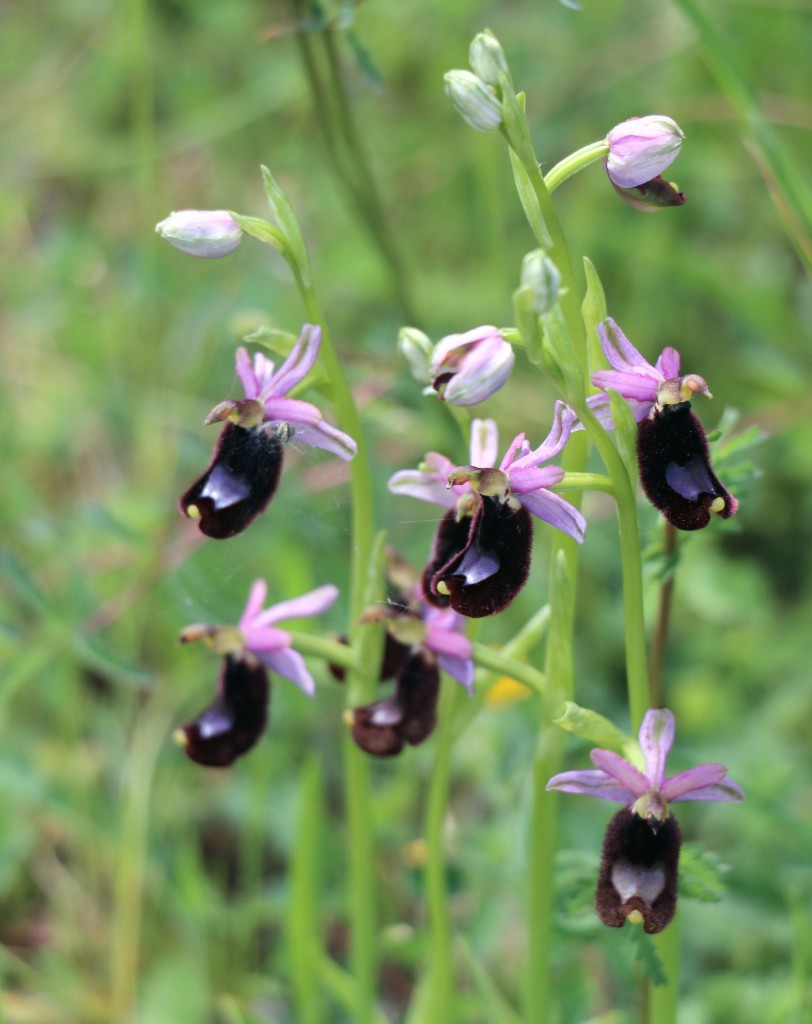 Most ophrys orchids are found in the Mediterranean region. They are protected and should never be removed from their habitat, as they are dependent on symbiotic fungi, so that it is almost impossible to transplant then.
Most ophrys orchids are found in the Mediterranean region. They are protected and should never be removed from their habitat, as they are dependent on symbiotic fungi, so that it is almost impossible to transplant then.
Together with Dino, we discovered several ophrys orchids, e.g. the woodcock bee orchid (Ophrys scolopax – photo 3) that really looks like a female bumblebee visiting a flower. Maybe you can imagine it: an attracted male bee thus tries to mate with the flower, the bee is covered in pollen and then proceeds to spread it around. During the last few years I have seen such orchids at several places along dirt roads and trails, in the mountains and forests of Montenegro.
A variant is Bertoloni’s bee orchid (Ophrys bertolonii – photo 4). Although it is usually rare (so far, I had seen it only once), this year we discovered quite a lot of them. A nice surprise!
Long-lipped Serapias (Serapias vomeracea) is another orchid that could hardly be spotted so far. Now we even saw groups of these orchids in different variants. The name Serapias derives from the Greek Sarapis, the Graeco-Egyptian god, and was already used in ancient times to name some orchids.
These days we have also seen many other attractive orchids, e.g. the butterfly orchid (Anacamptis papilionacea – photo 5) and the attractive three-toothed orchid (Orchis tridentata).
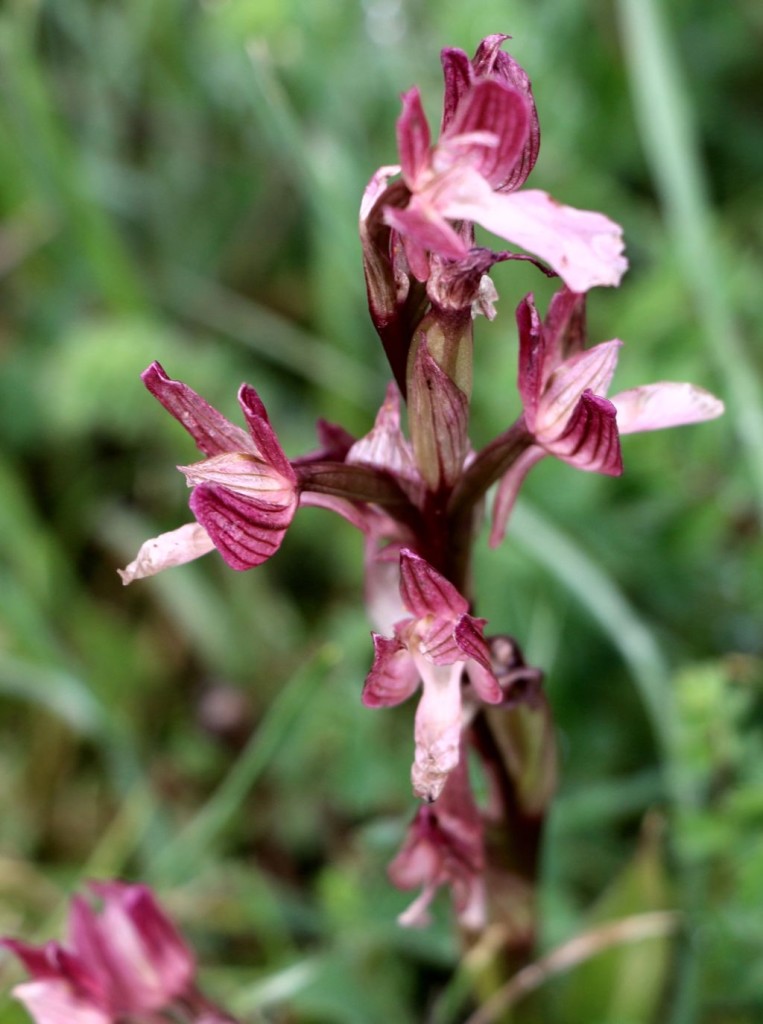 But don’t think that you can identify all orchids you see in Montenegro. An example is the Dactylorhiza on photo 6, which is obviously a strange variety that could not be recognized so far.
But don’t think that you can identify all orchids you see in Montenegro. An example is the Dactylorhiza on photo 6, which is obviously a strange variety that could not be recognized so far.
Montenegro is a very interesting country for lovers of wild flowers and orchids. If you are interested in participating in an orchid tour from Great Britain next year, contact for further information Dino Zelenika (e-mail: dinoh@blueyonder.co.uk).
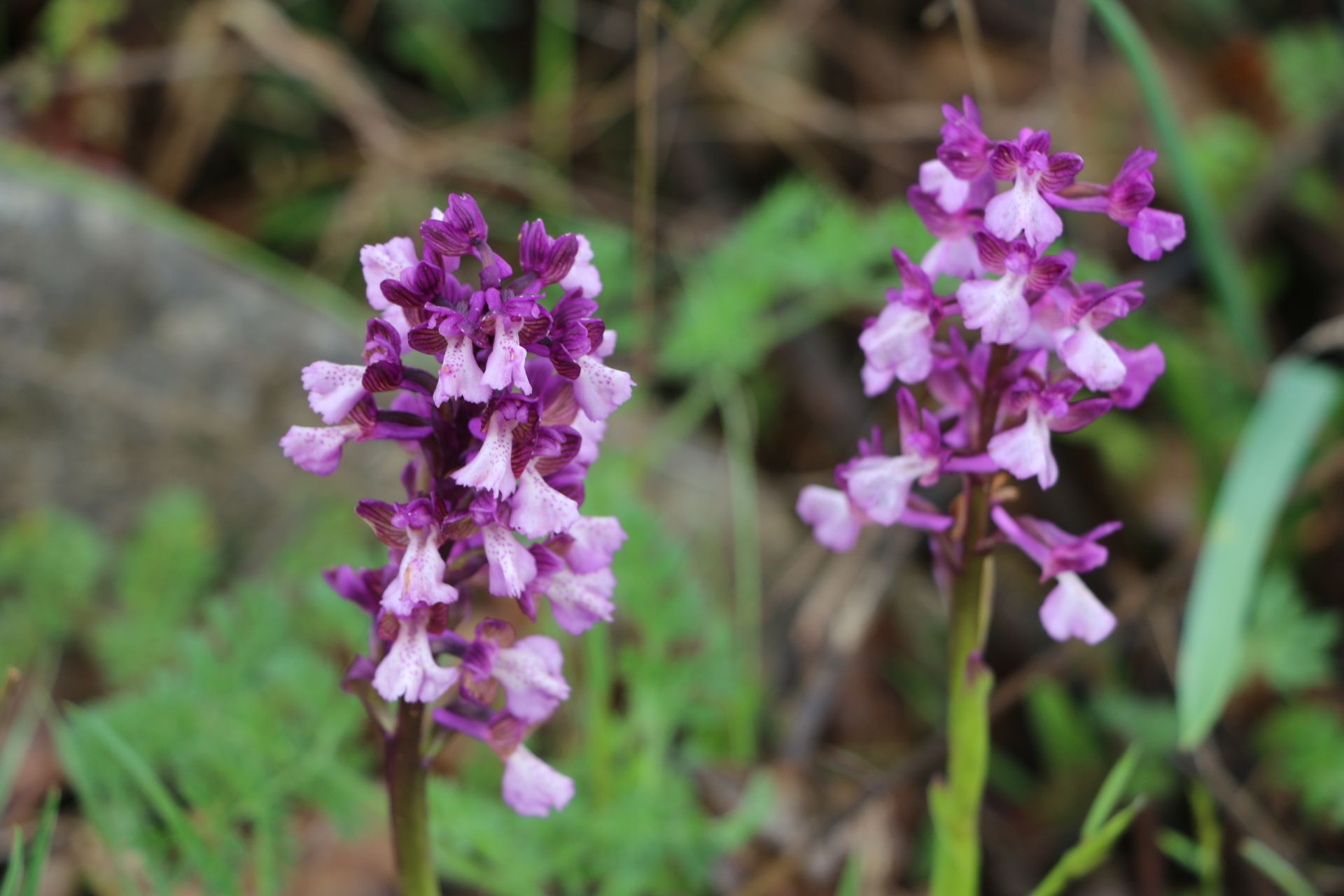
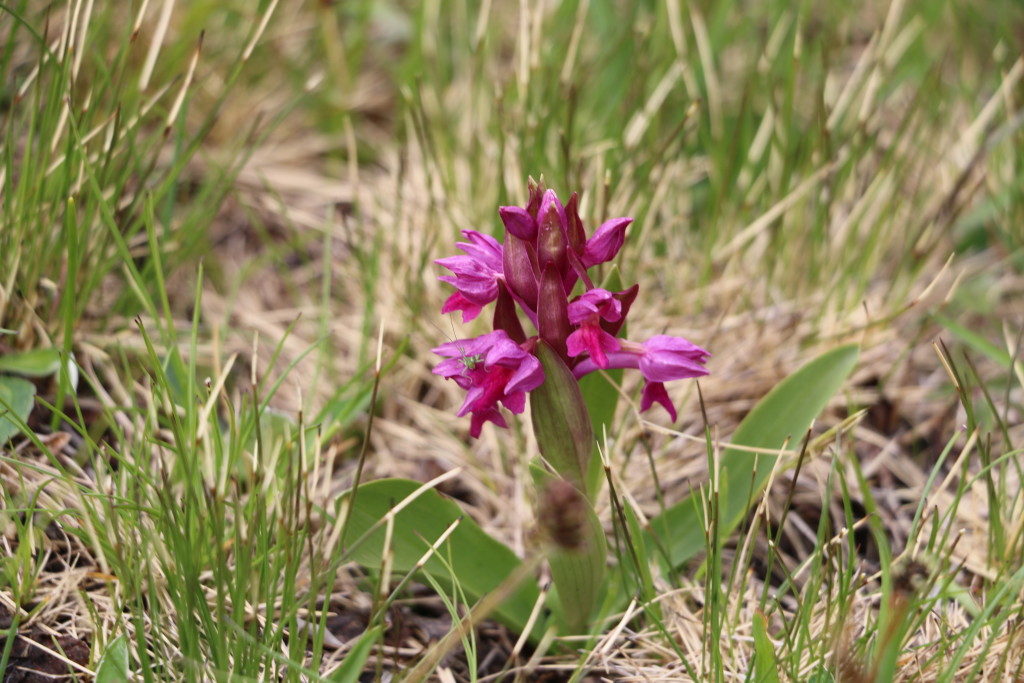
Fascinating. Love the photos, too. I’ve put a link to your article on my orchid blog. Hope that’s OK!